
Wir reisen, also sind wir
vakantio.de/wirreisenalsosindwir
Argentina: Ushuaia
Dɛn dɔn pablish am: 29.04.2019
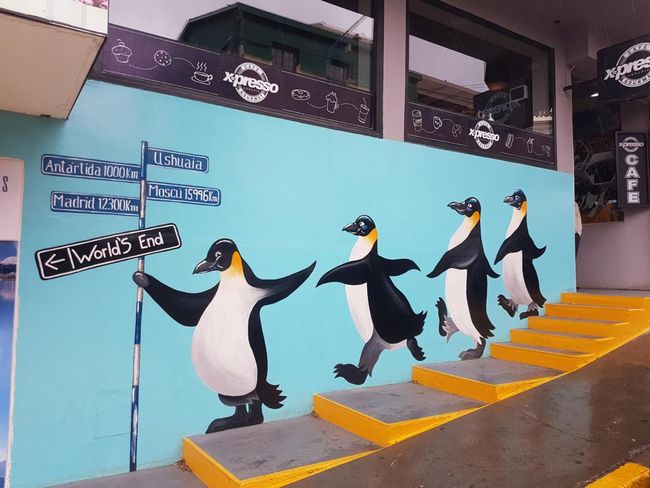
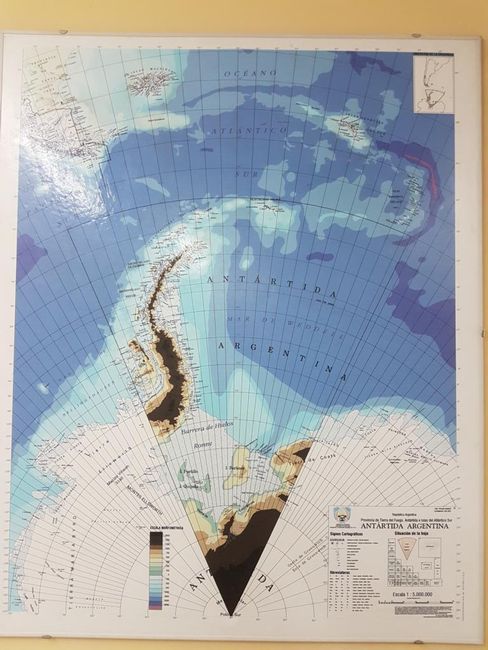
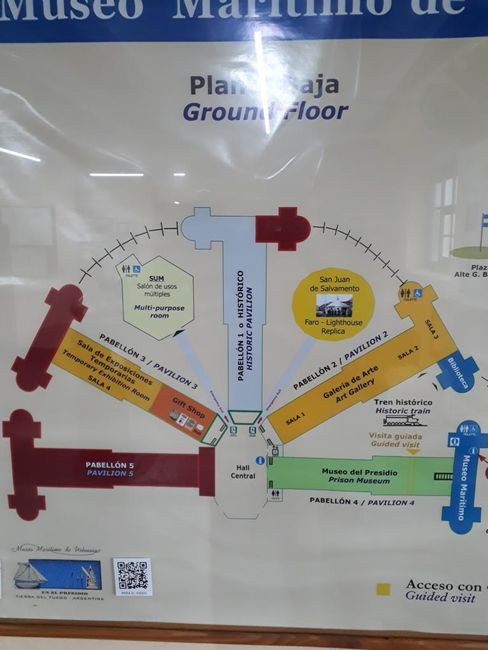
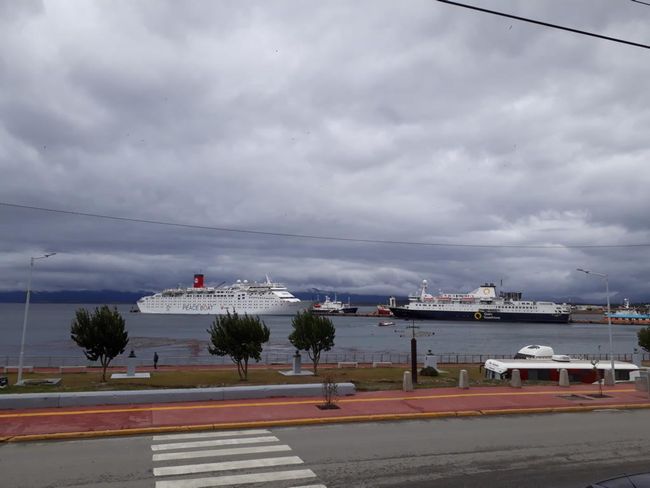
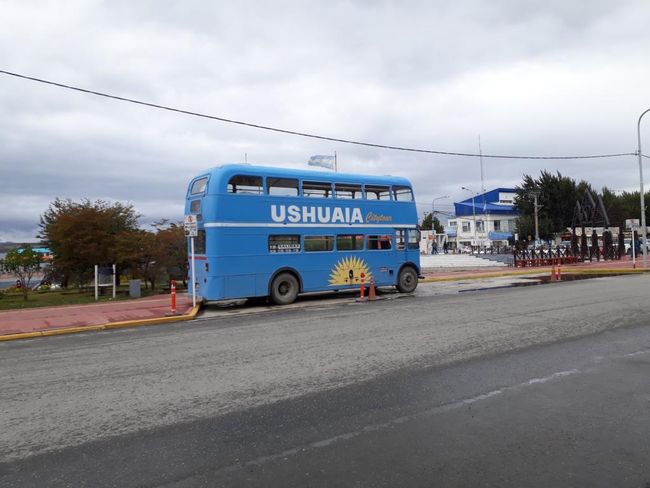
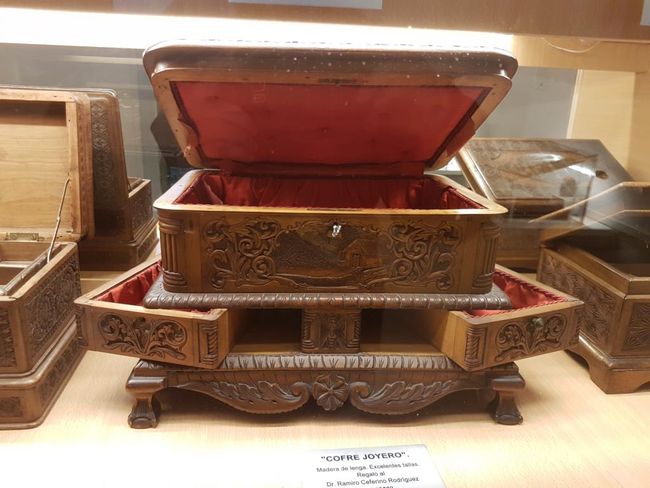
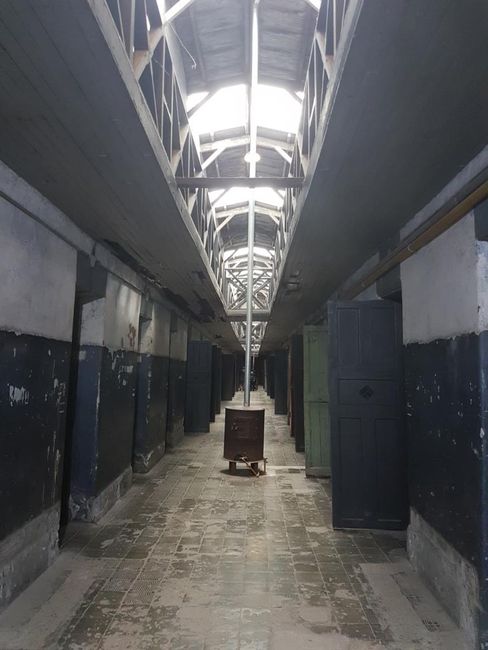
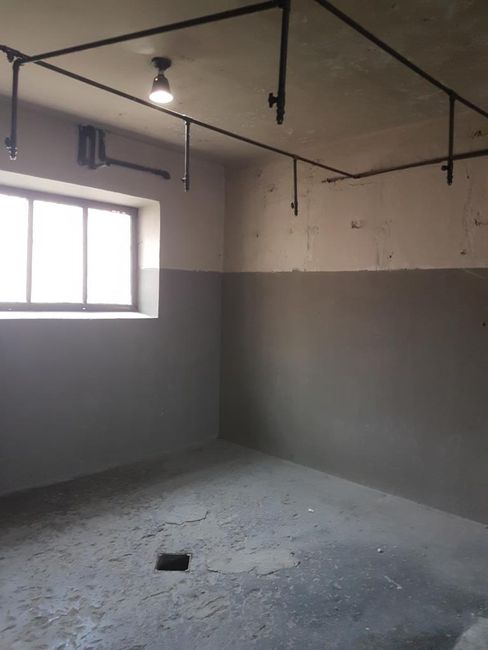
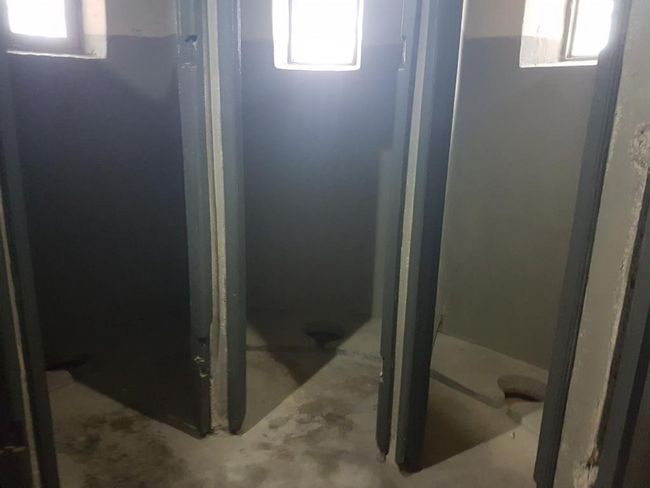
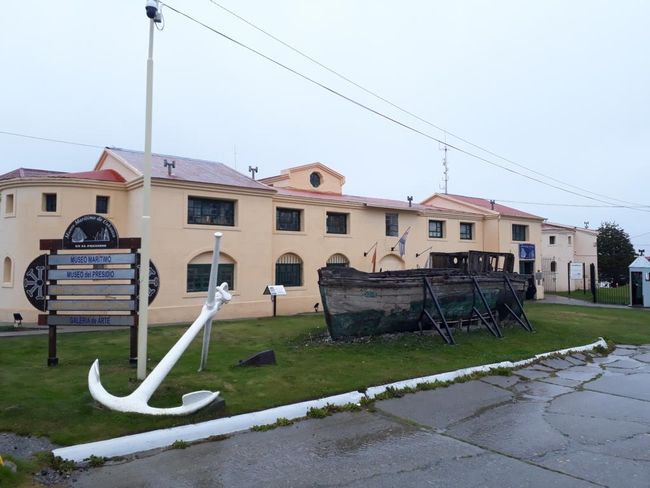
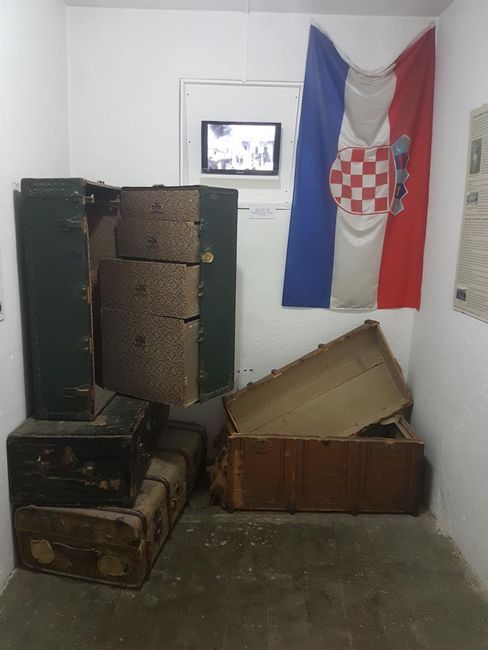
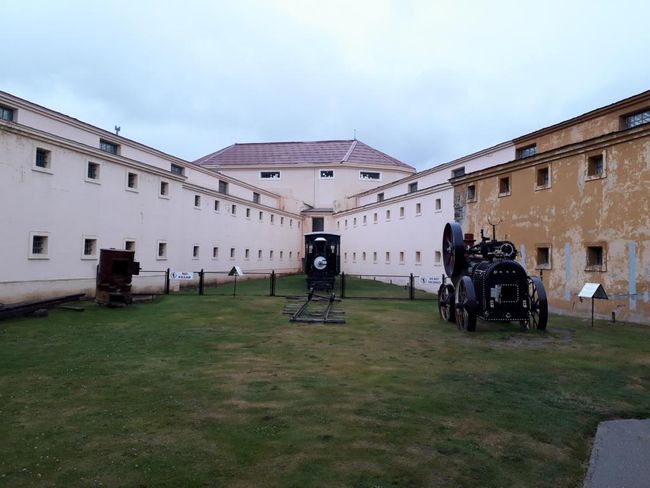
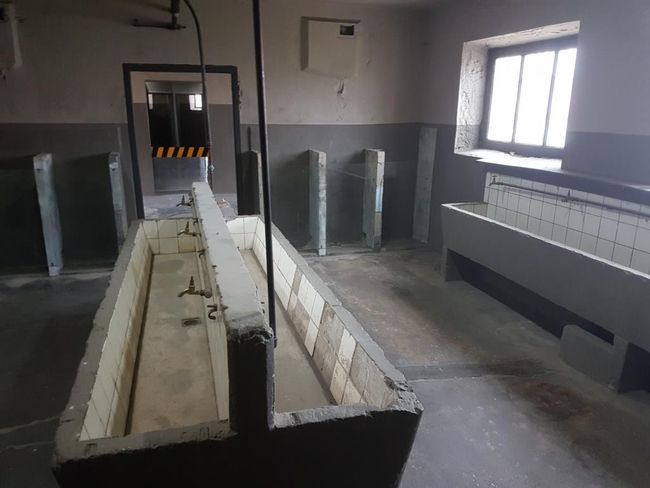
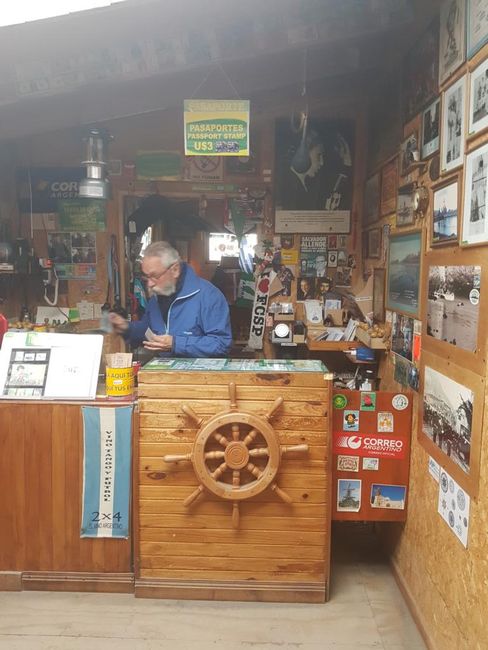
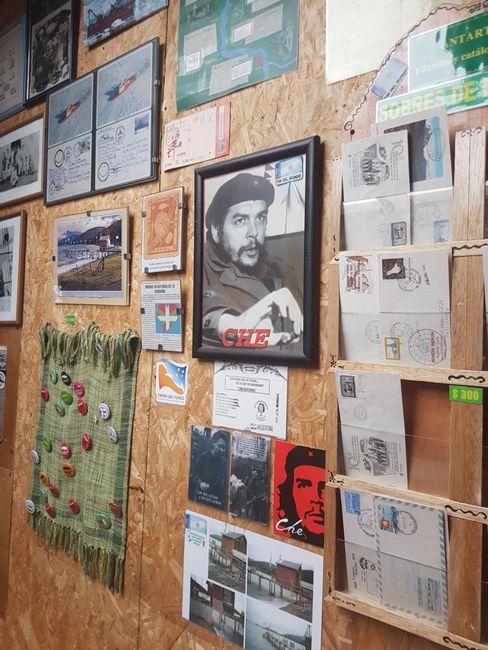
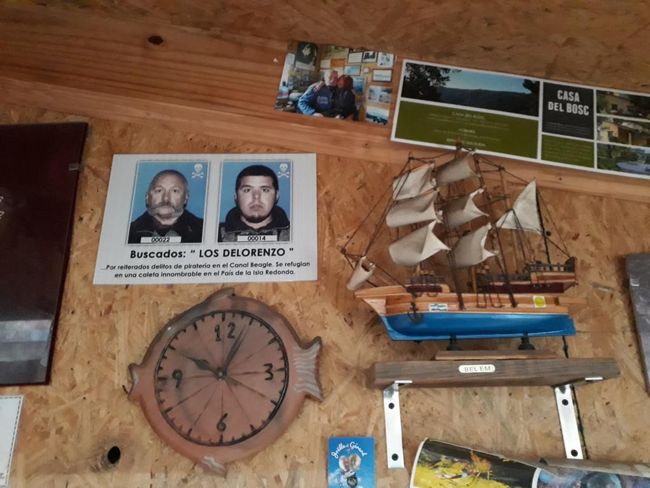
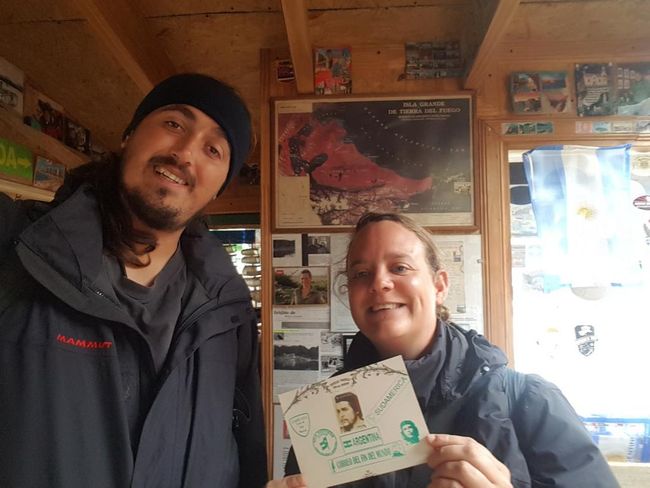
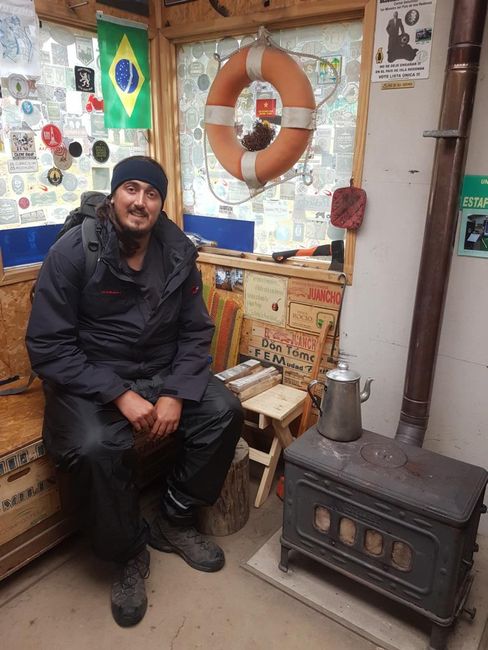
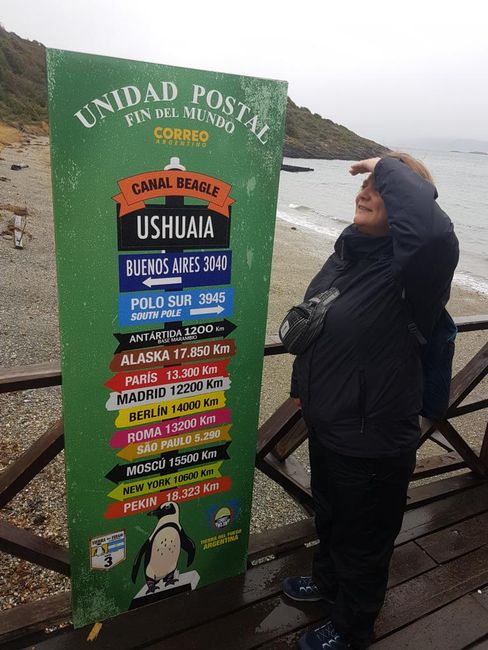
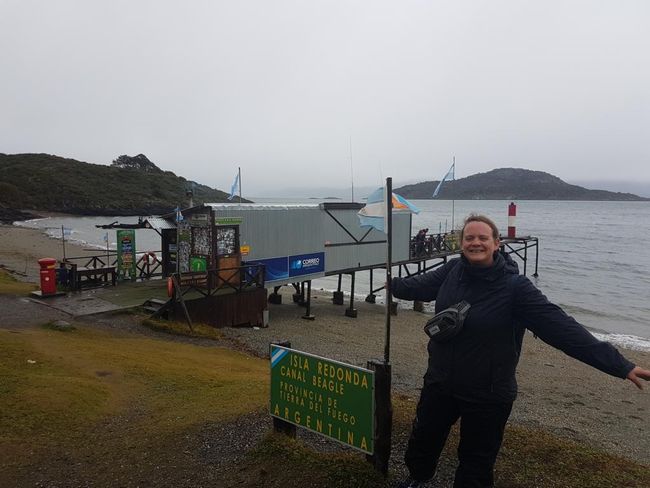
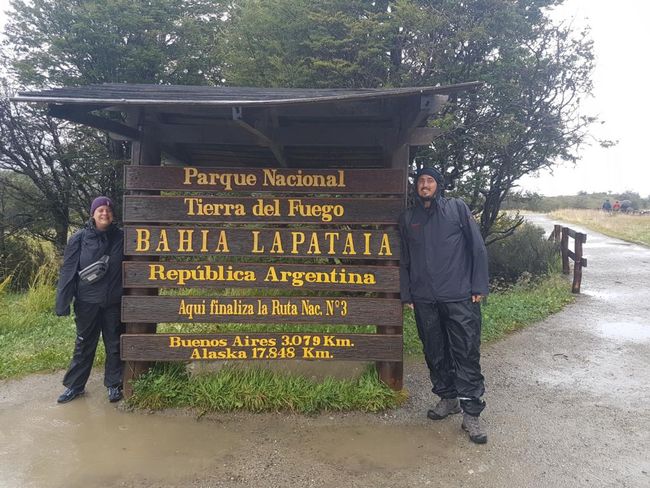
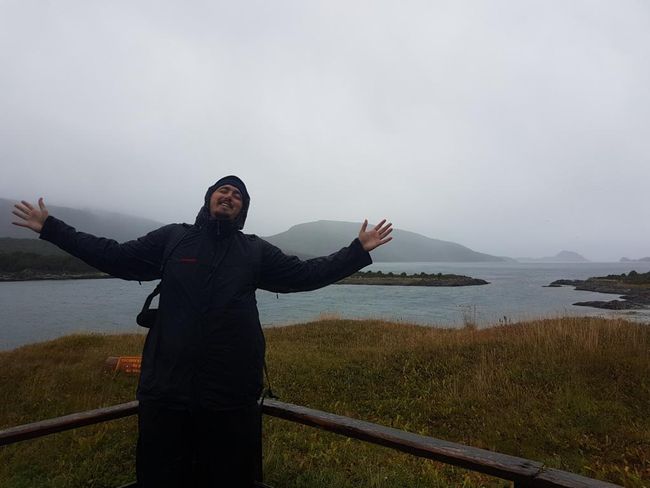
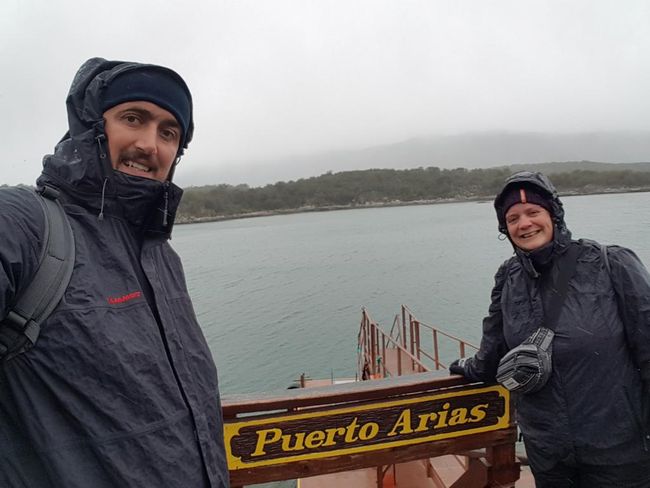
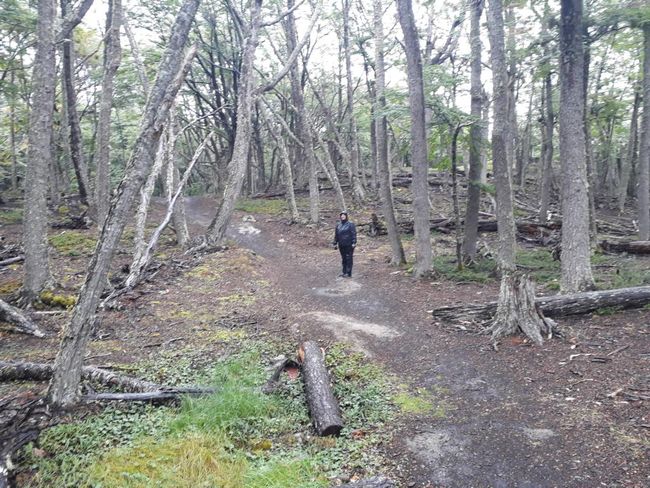
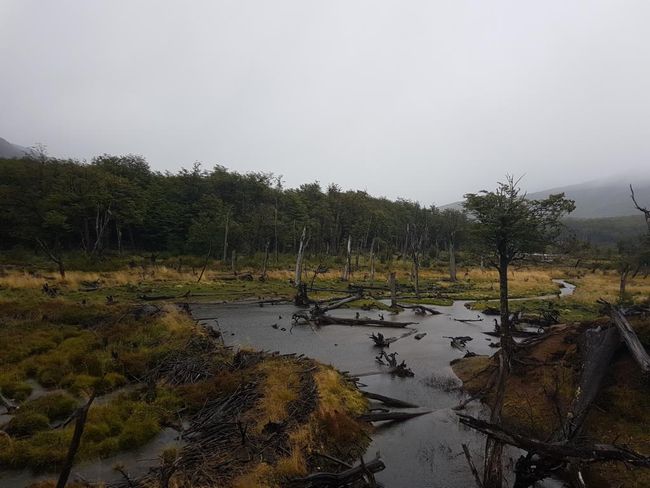
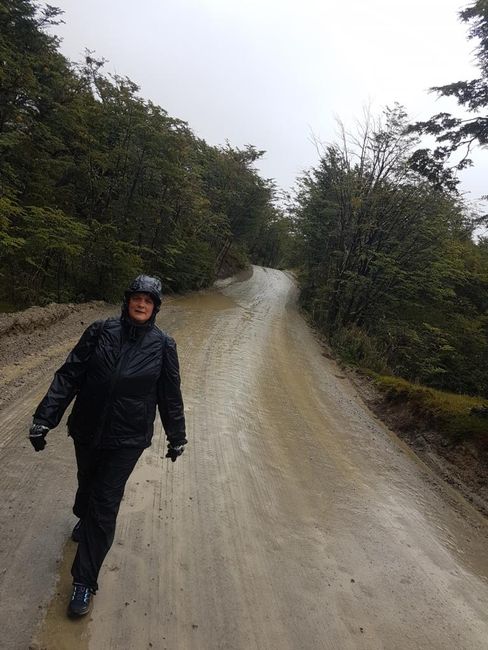
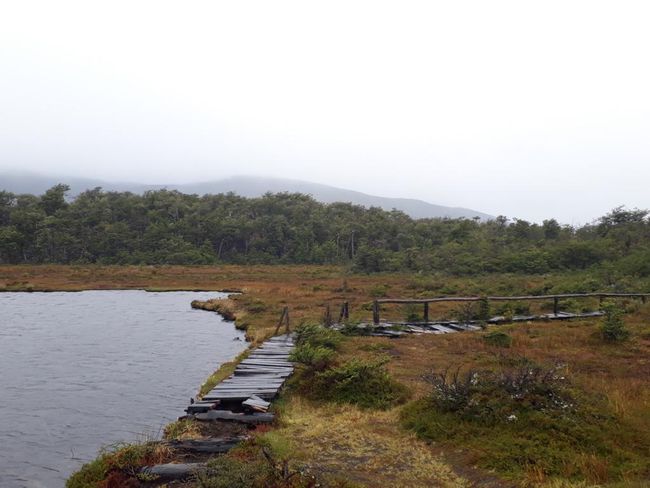
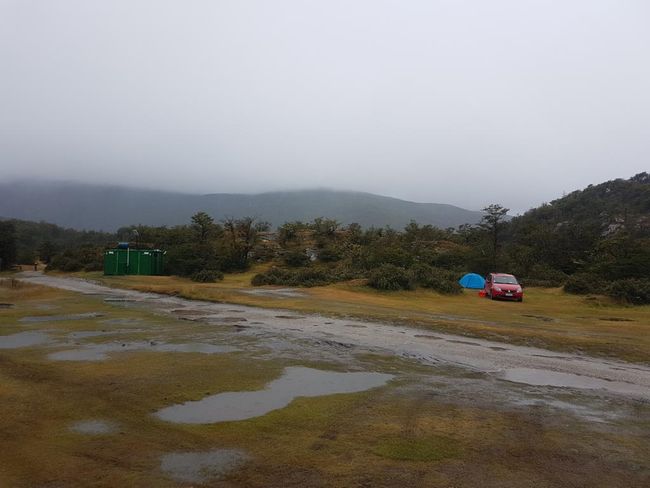
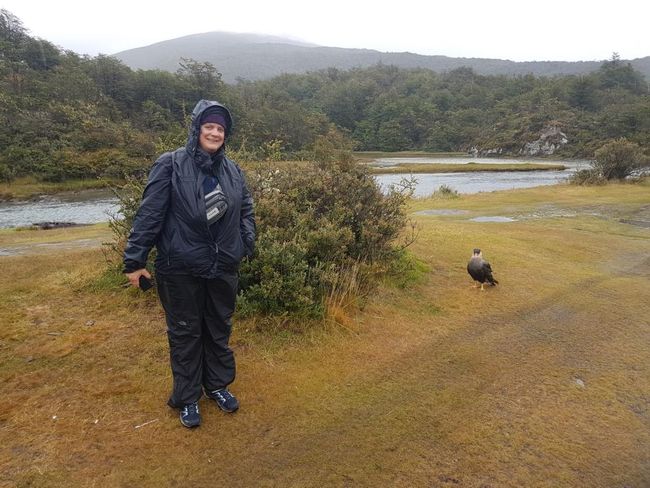
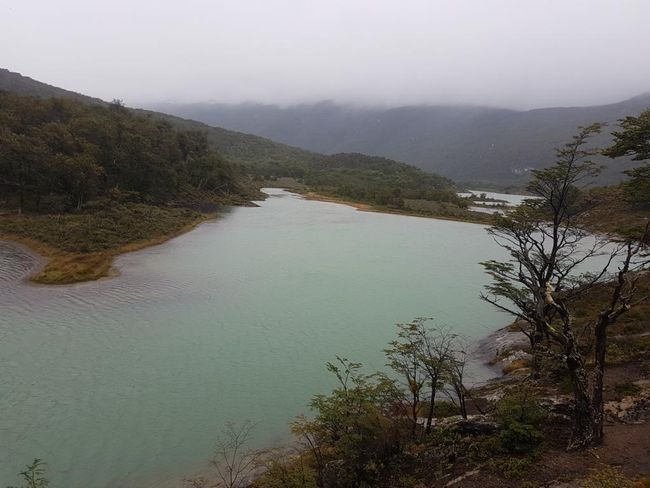
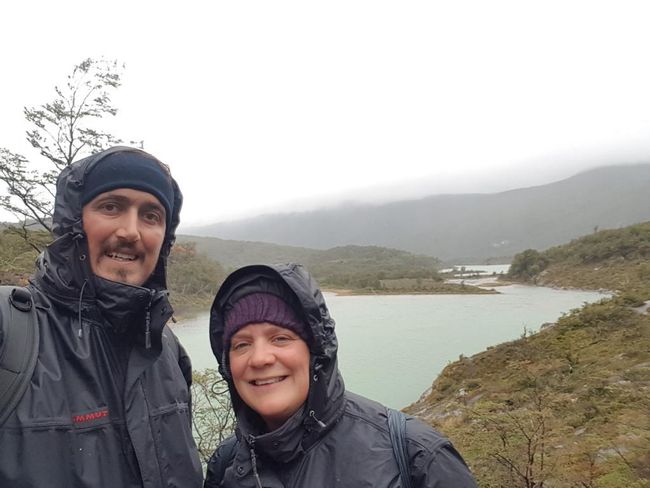
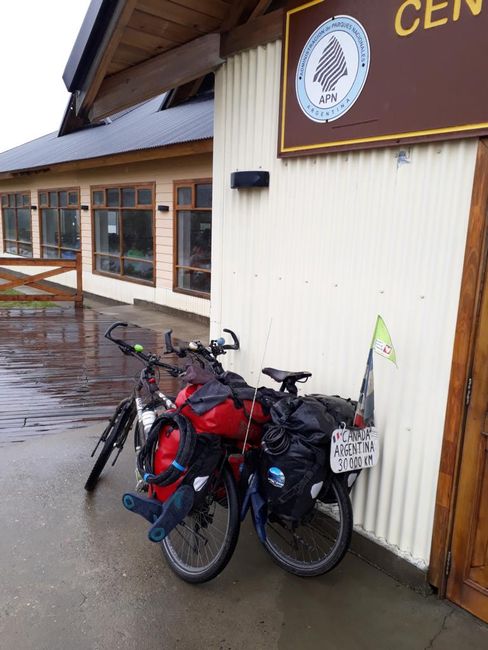
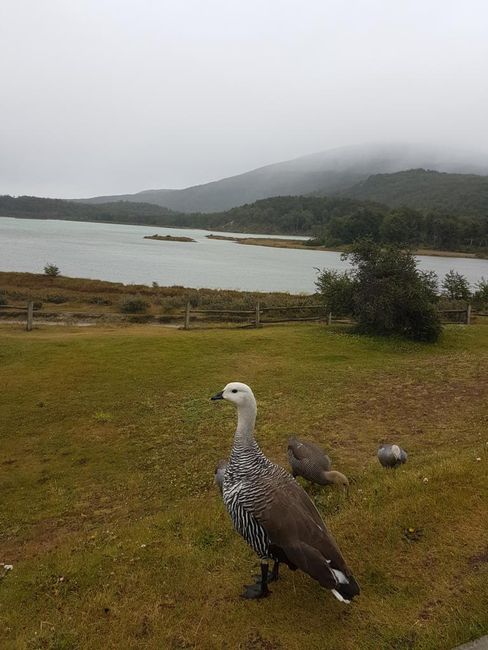
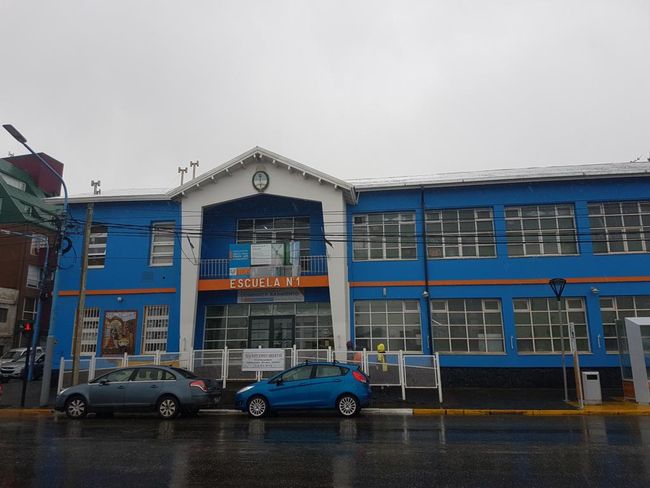
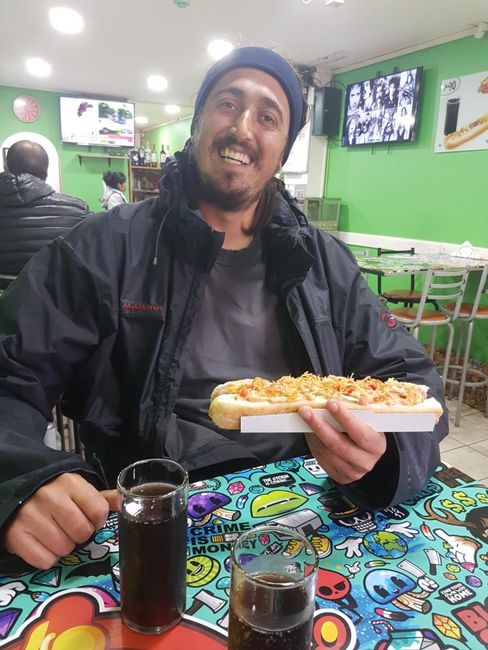
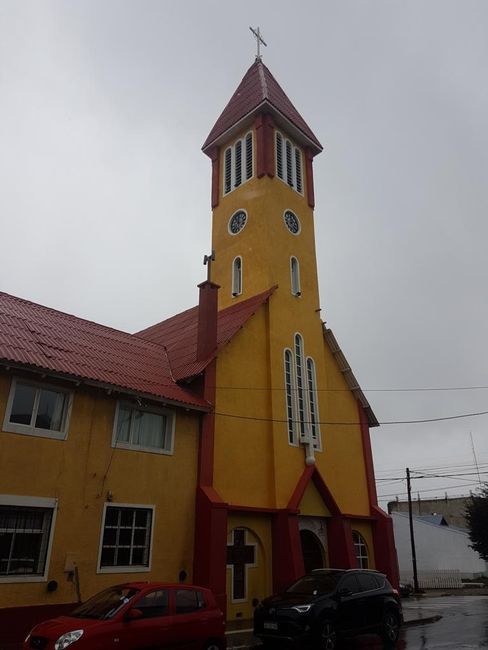
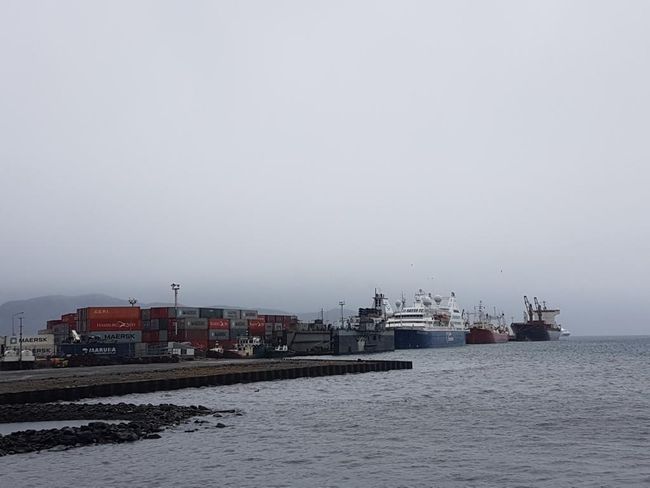
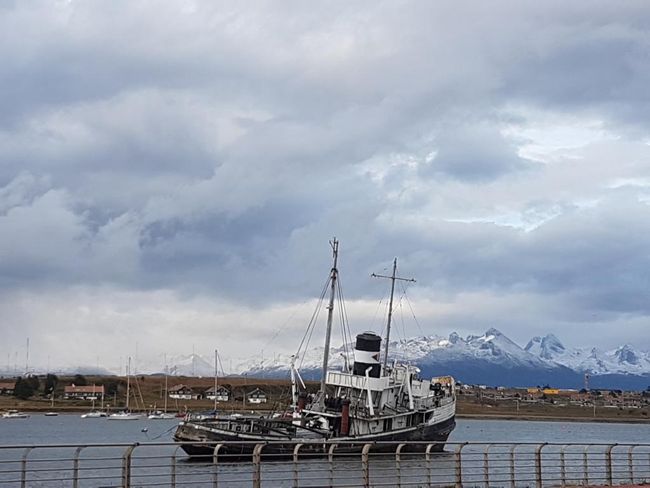
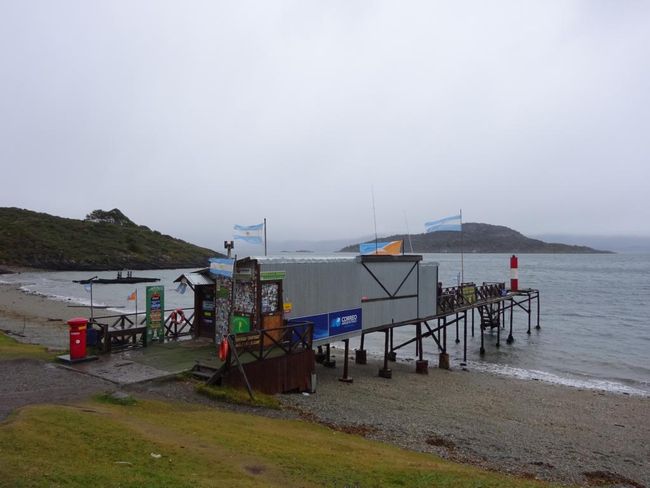
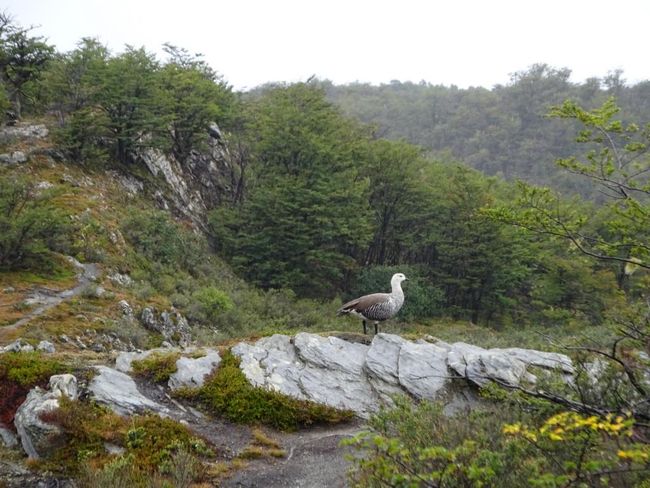
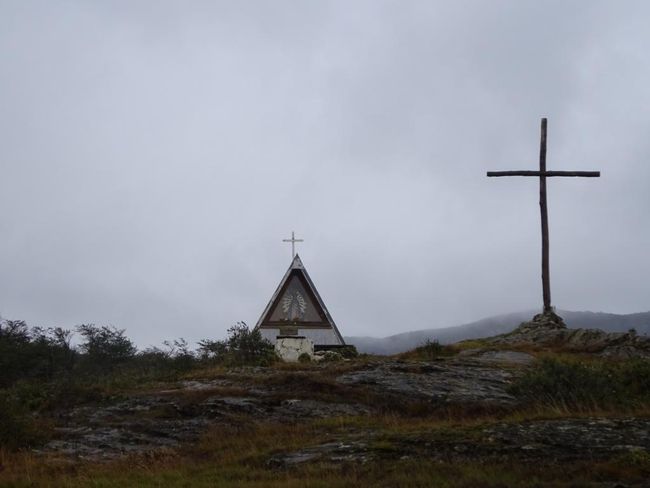
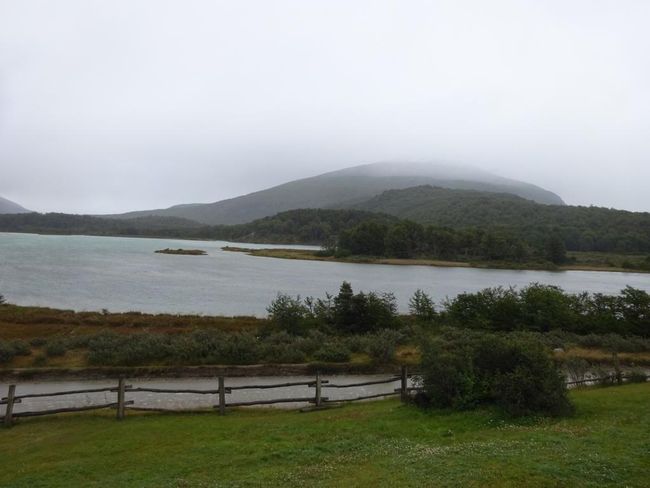
Sabskrip to Nyusleta
From Calafate we first went to Rio Gallegos, where we had to wait for the connecting bus for about 3-4 hours in the early morning. Very uncool. At the bus terminal, we met an older Swiss couple, so at least we could pass the time during the conversation. Unfortunately, there was no infrastructure at the terminal, not even a coffee shop or breakfast.
But even when the bus arrived, it didn't get any better, on the contrary. First of all, there is no Cama class down here anymore. That means we had to squeeze ourselves into the Semi-Cama class for a change. For a few hours, that's still okay, but it was a long journey from Rio Gallegos to Ushuaia. In addition, we constantly had to get off and on the bus. To get to Ushuaia, you have to drive a short distance through Chile and go through all the border formalities. So, exit Argentina - entry Chile - exit Chile - entry Argentina. Funny enough, we got the last missing stamp in our passports there, the Chilean one. After all, we had already been at the Chilean border once, namely during the Uyuni tour. But this time we wouldn't stay in Chile, at least not for now. Between the border crossings, we also had to cross the Atlantic side of the Strait of Magellan. There are no bridges here, the magic word is ferry. At the port, we all got off the bus and boarded the boat on foot to cross from Punta Delgada to Tierra del Fuego. Then back on the bus and the journey continued. We traveled for a total of 18 hours from El Calafate to Ushuaia, and it was definitely one of the most exhausting journeys of the entire trip. Accordingly, we took the first taxi to the hotel in Ushuaia and did nothing for the rest of the day or evening.
On the first day, we slept in and visited the Museo Maritimo and Museo del Presidio in the afternoon. The museum is located in the old prison and deals to a large extent with the history of Ushuaia, which is closely linked to this prison. Ushuaia was actually built as a penal colony to get rid of the criminals from northern Argentina and to accommodate them far away from society. The first convicts established here were relocated from another prison in 1906 and had to build their own prison first. Military prisoners and political prisoners were also held there over time. The museum describes the harsh prison life. The journey to the prison was brutal, the prisoners were shackled to their arms and legs with iron, so that they could hardly move and had to endure it below deck during the 4-week journey. In the prison, the prisoners had to work. Many worked as loggers in the forests. Every day, even in winter, the prisoners and their guards covered a distance of 12km between the prison and the forest. Prisoners with good conduct were later allowed to stay overnight in a camp in the woods to save them from the daily march and to use the time for work. This gave them a little more freedom. Soon, small railway lines were built to transport the wood from the forest to the village. The prison had a daily need of 30 cubic meters of firewood!
Working outside the prison, in the fresh air and in the sun, was already a privilege that was only granted to those who behaved well. The prisoners were surrounded and monitored by armed guards all day long.
The treatment in the prison was harsh, prisoners with particularly severe punishment were not even allowed to read, receive letters, smoke, or drink mate. They also received only half of the daily ration for meals. Non-compliance was severely punished, solitary confinement was ordered, the cell could no longer be left, and the food was reduced to water and bread. For minor offenses, there were other punishments, such as standing outside for hours, possibly with outstretched arms, or working in chains. On the other hand, good behavior was rewarded.
All communication was strictly monitored, the prisoners were only allowed to write to relatives who were on a list. Occasionally, newspapers arrived from the arriving ships with a two-month delay. Settlers from the now established village sometimes sympathized with prisoners who worked in town, gave them newspapers or secretly sent letters.
The prison was never surrounded by a wall, there was only a metal fence. It was believed that it was impossible to escape from the cells, even digging a tunnel through the stone floor was impossible. And even if they did, where would the fugitives go in this inhospitable area? In fact, there were some escape attempts, but most were found again after a few days. Only a few were never seen again.
For a long time, there was no hospital or medical care. This affected not only the prisoners but also the settlers in the village. Seriously ill people had to be brought from Navy ships to the mainland, but they only arrived about every 2 months. Most of the sick then died on the long journey. Eventually, a doctor and a nurse settled in a prison wing. Only in 1943 was a hospital established, which was available for both the prisoners, the prison staff, and the settlers in the village.
Many prisoners committed suicide or died from diseases such as tuberculosis. In the early years of the prison's existence, there were only a few deaths, but over time, there were more and more. In the 1930s, 1-2 coffins per week were carried through the settlement to the cemetery.
In the museum, you can still visit a wing that has been left in its original prison condition.
In the second part of the exhibition, it is about famous ship expeditions, the discovery of Tierra del Fuego, and expeditions to Antarctica. The respective ships are presented, the expeditions are described, and the hardships the crews had to deal with.
For example, there is Ferdinand Magellan, who discovered the strait named after him on October 21, 1520. The Chilean province in Tierra del Fuego is still called "Magellanes" to this day. He was also the one who gave the Pacific Ocean its name after crossing the Strait of Magellan and discovering a peaceful sea on the other side. He also named Tierra del Fuego because of the smoke from fires of the indigenous population. Magellan embarked on this expedition with 5 ships and 266 men. Only one ship with 17 men returned to Spain on December 6, 1522.
Or the story of the famous pirate Sir Francis Drake, after whom the Drake Passage between Tierra del Fuego and Antarctica is named, one of the roughest sea routes in the world, just like its namesake.
The stories of the many shipwrecks around Tierra del Fuego are also told.
Another part of the museum is about the Yaghan people, the indigenous people here. After the arrival of the Europeans, the Yaghans almost completely died out because they could not adapt to the European way of life. Diet, introduced diseases, resource exploitation, and land disputes contributed to this. The indigenous people suffered particularly from the measles, which reduced the indigenous population by half by 1884. While there were still about 1000 Yaghans in the reserve in 1884, there were only 45 in 1925. The Yaghans were water nomads, so they mainly lived in their canoes. They did not wear clothes. To protect themselves from the cold, they rubbed themselves with whale and sea lion fat, which were also the main component of their diet. The newcomers brought clothing to the indigenous people, but this was by no means an advantage. On the one hand, the clothes already carried disease germs, and on the other hand, the clothes dried more slowly than naked skin. They also got dirty, previously rain and water kept people naturally clean. This caused diseases to spread even faster. The people were also forced to adopt a sedentary lifestyle, which further increased the unhygienic conditions because the Yaghans simply were not used to it. Although the Yaghans mainly lived on canoes, the men curiously could not swim, because it was the task of the women to jump into the water to catch fish. As a result of the settlement by white settlers, the Yaghan people were almost completely wiped out in the early 20th century, just like the 3 other indigenous tribes of Tierra del Fuego. While the population in 1834 was still about 3000, it was only 50 a hundred years later. 4 Yaghans who were kidnapped to England during an expedition and were supposed to be converted and educated there, in order to then return to their tribe and pass on Western ideas to their relatives, became known in Europe.
In another part of the museum, it is about the development of the city of Ushuaia, about the construction of the school by the prisoners, and about architectural features, such as the round roof windows that the old buildings have. On some aerial photographs, you can observe the expansion of the city over the decades, which was really impressive.
A rather macabre part of the museum deals with prisons from all over the world, including Auschwitz and various prisons in the USA, where the death penalty is still carried out.
It also deals with local penguin species, the exploitation of geothermal energy, and the conflict over the Falkland Islands.
The museum is a real mixed bag where all sorts of topics are treated rather unstructured and unorganized. It is also not particularly interactive, mainly there is text and some pictures, very few exhibits. Nevertheless, it is a good way to pass the time on a rainy afternoon. Actually, one afternoon is by far not enough to work through the colorful mix of topics.
For the next day, we had planned to visit the Tierra del Fuego National Park. The next morning, we found out: it was still raining heavily. It was also freezing cold, with sub-zero temperatures. But we didn't let that stop us (after all, we had already bought the tickets for the tourist bus). We were also equipped for such undertakings. So we bundled up in our winter and rain gear and set off. We got off the bus at the first stop at the "Fin del Mundo" post office. The post office is a rickety wooden shack on a boathouse with a small coal stove and a "post counter" operated by a quirky old guy. Ushuaia is considered the southernmost city in the world, even though it is not exactly. Actually, it would be Puerto Williams in Chile, but getting there is quite cumbersome. But that didn't matter to us, because we had something to celebrate here. After all, it was almost exactly 14 months ago that we started our journey south from Cancun, Mexico. In 14 months, we had traveled from Mexico to the End of the World. (Of course, at this point, we must not forget our wonderful first stage in Cuba and Colombia, which was not part of these 14 months). To celebrate the day and to remember this monumental moment, we sent a completely overpriced postcard (unfortunately, we didn't think of bringing one and had to buy one there) to ourselves from the post office at the End of the World. And who adorned the card? None other than our loyal friend and companion, el Comandante Che Guevara. Alternatively, we could have had Evita.
Originally, we had planned to walk from the post office along the coast to the visitor center. However, considering that this path would have taken about 3-4 hours, we decided to spend an hour in the warm post office and wait for the next bus. So we did, and we caught the next bus to the final stop at Bahia Lapataia. From there, we walked back to the visitor center in pouring rain and still freezing cold. There was absolutely nothing to see along the way, not even rats leave their burrows in such weather. This action will definitely be filed under the category of "things you do while traveling that you would never voluntarily do at home". Along the way, we passed a beaver dam where there were no beavers, and a black lagoon that was not black at all. An interesting side note about beavers: The animals were settled here to make beaver hats out of them. Unfortunately, the demand for such hats completely collapsed, and since then, the animals have been a huge nuisance to the local fauna. Especially for the Lenga tree, which grows so slowly that it takes centuries to grow as large as the trees found in Tierra del Fuego. And then a beaver comes along and undoes the work of centuries in a few minutes by felling the trees. And as fast as the beavers work, the trees cannot recover. In addition, the beaver dams flood large areas completely.
After hours of absolutely uninspired walking mainly along the road (and past a campground where some crazy people were actually camping), we finally arrived at the visitor center and had had enough. This should be enough, we would not take another step. While waiting for our return bus, we got into a conversation with 2 Frenchmen who had cycled from Canada to Ushuaia, covering over 30,000 km. Also a very impressive encounter. I would never want to do something like that in a million years. But respect. Since they had run out of money by now, we gave them the rest of our snacks, which they were very happy about.
When we finally got back to the city, we took a look around the quite modern city and the harbor with the big ships. Unfortunately, we couldn't see the snow-covered mountains that surround Ushuaia very well due to the fog.
Travelers mainly visit Ushuaia to board a cruise ship to Antarctica from here. Originally, we had also planned to do that, it was supposed to be one of the biggest highlights of the trip. Along the way, we eventually decided to extend the trip by 6 months instead. Because, actually, you can do that, travel for 6 months with the equivalent value of such a cruise. That's how expensive it is. But flying to Argentina for 3 weeks to take a cruise, you can always do that. Quitting your job, giving up your apartment, selling your car to travel for 6 months, however, is not something you do every day. That's why we weren't sad that we didn't take a cruise to Antarctica this time. Which also means that we will definitely come back here someday, to the End of the World. Hopefully with better weather.
And with that, we conclude our time in Argentina. Argentina was a bit boring for us in that regard, as it feels very European. There is no indigenous culture here anymore, such as in Bolivia or Peru. In Buenos Aires, you easily feel like being in a European metropolis. Apart from Buenos Aires, there is no need to visit Argentina because of the cities, as they are absolutely unimpressive. Museum lovers also have to suffer here, as most of the museums are terrible. But the country has some great highlights on the continent. In addition to Iguazu, there are the well-traveled destinations in Patagonia, where, of course, every bone wants to go. To avoid being discouraged by the crowds of visitors, you should not be discouraged, because there are really enchanting places, even if you are not alone there.
Many Latinos from other countries have told us that Argentinians are arrogant. And indeed, we got that impression a bit, especially in Buenos Aires. On closer inspection, however, it is neither arrogance nor unfriendliness, rather a coolness and aloofness that is also attributed to the Scandinavian countries in Europe. As a foreigner, you are not exactly enthusiastically welcomed, but you are accepted everywhere and mostly treated with respect.
Tourism is well developed in the country, there are also many domestic tourists, especially in the high season in January and February. Accordingly, it is a bit more expensive everywhere, but especially for Patagonia. In return, you can hope for some English if you don't speak Spanish. But even for Spanish speakers, Argentina is a challenge at first, until you get used to the strong dialect, especially in and around BA. Double-L = sh, this is the most noticeable feature.
In addition, the country is relatively safe, which can definitely be seen in the partly huge and pompous overlander vehicles that are shipped here by tourists from Europe and crisscross the entire country. Everything is included, from small old hippie VW buses to Toyota Land Cruisers to huge converted trucks that offer all the amenities. You can't expect thrills in this regard, a trip through Argentina is not particularly adventurous, thanks to the good infrastructure, safety, and abundance of products and goods in our opinion.
You definitely have to be prepared for very long journeys if you want to travel the whole country. And heading south, the quality of the buses definitely decreases, there are hardly any Cama class buses anymore, and only 1-2 companies serve these routes, so you are also very limited in terms of departure times and sometimes have to book well in advance. As mentioned before, Argentine buses are praised everywhere. This must be clearly denied. Unless you enjoy a dry cookie and a lukewarm tea for breakfast and pay more than double the price compared to elsewhere. Other countries definitely have more to offer when it comes to bus travel, see my digression about bus travel in South America in the capital Ciudad del Este in Paraguay.
Currently, a trip to Argentina is comparatively cheap for Europeans, due to the constantly weakening Argentine peso compared to the dollar. Good for travelers, bad for the population, which suffers greatly from high inflation. However, this will not improve quickly with the prevailing credit mentality.
All in all, we liked it here. We spent about 9 weeks in Argentina. If my count is correct, we entered Argentina an incredible 8 times, making it by far the most visited country of the whole trip. Our time here was not particularly exciting, but in terms of flora and fauna, the country has a lot to offer, there are beautifully scenic areas, and it is definitely recommended for nature lovers and hiking fanatics (and overland cruisers with their traveling homes). Nos gustó.
Sabskrip to Nyusleta
Ansa (1)
Rene
Warum kommen keine Einträge mehr?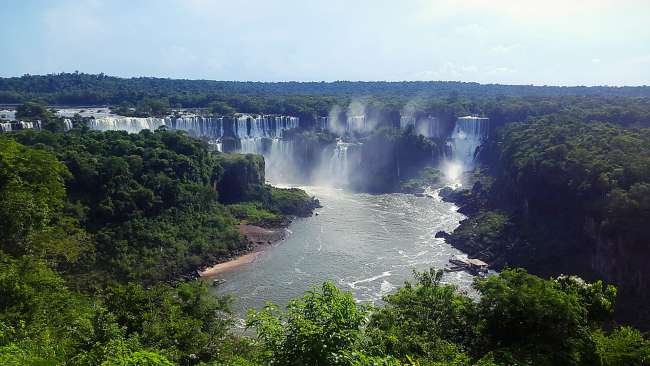
Travul ripɔt Ajentina
